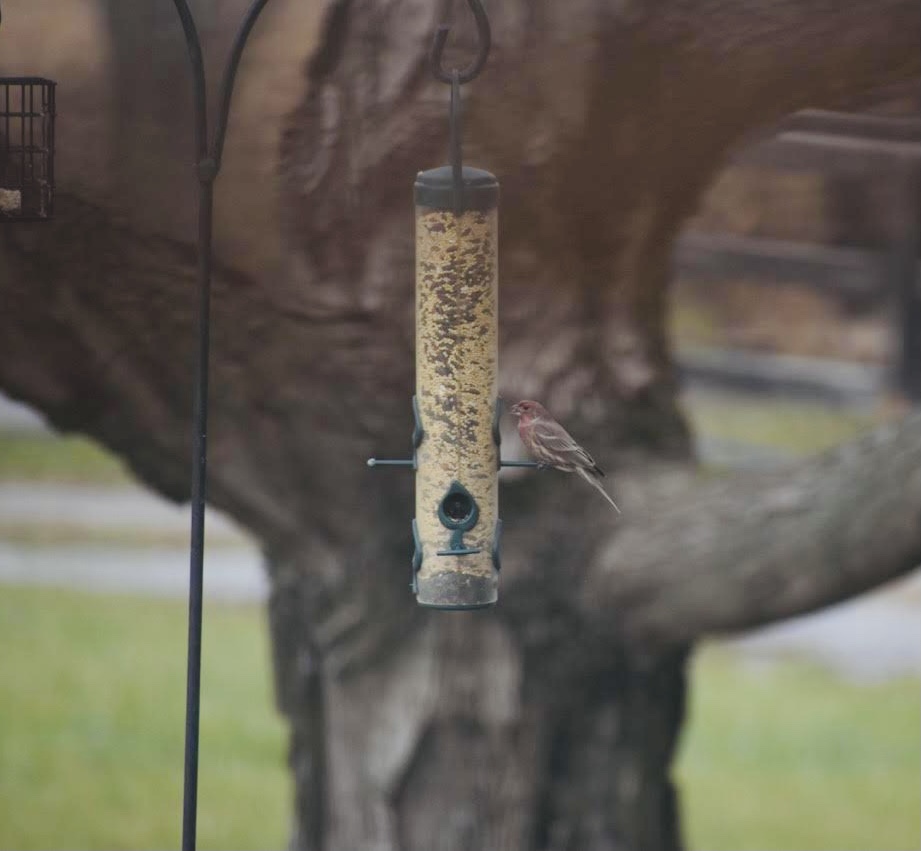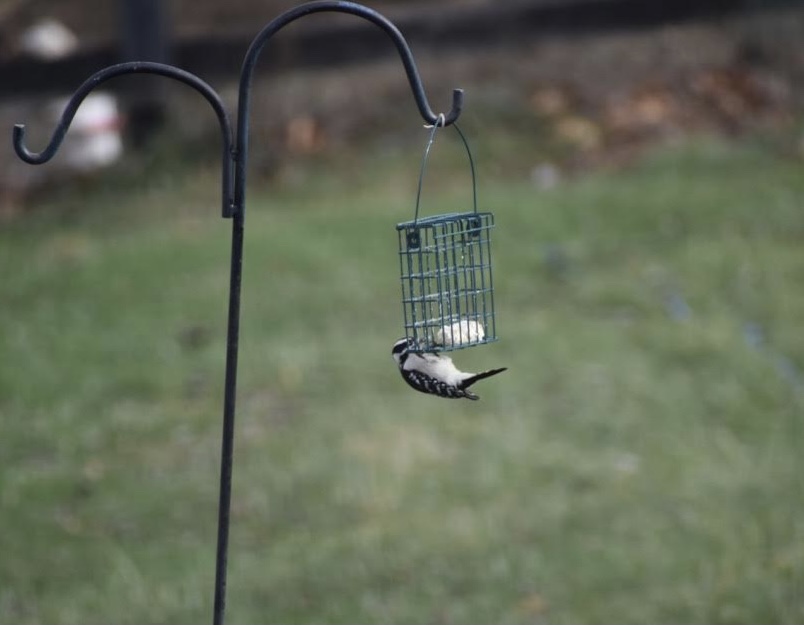
With the arrival of below-freezing weather, we’ve put the bird feeders out. On one side, a mix of wild bird seed; on the other, a seed-studded suet cake. The birds have enthusiastically visited the feeders (one out front where we can see it from the breakfast nook) and out back, visible from the dining area. With a pair of binoculars, it makes for excellent viewing.
Cold weather means slim pickings for the birds, and providing appropriate supplemental feed can help our feathered friends survive the winter. We place our feeders on shepherd’s hooks near trees so that nervous birds (and who can blame them?) can fly from tree to feeder and back, as they wish.
So far, I’ve seen cardinals (ground feeders who pick up the sunflower seeds and nuts tossed out by the smaller birds), finches, sparrows, chickadees, flickers, doves, titmice, woodpeckers, starlings, and mockingbirds at the feeders. Starlings have also visited, but despite my concerns that they might decimate the feeders, they’ve only eaten a reasonable amount from the tube feeders and suet cakes. All birds are welcome – they all need to eat.

When we first began feeding birds in cold weather, I worried that it might actually be harmful to them, creating a dependence on human handouts and curbing their natural drive to seek out seeds and other wild food in the environment. While there is some conflicting information (what a shocker, right?) available online, my research indicates that, overall, offering nutritionally-appropriate, properly maintained supplemental feed to birds, particularly during the harshest winter conditions and into at least early spring, is beneficial to wild bird populations. And while food is important to wild birds, don’t forget that they need water, too – and in very cold weather, liquid water can be difficult (or impossible) for wild animals to find – so don’t forget to put out fresh, clean water for them.
Once, during winter a couple of years ago, a tiny goldfinch hopped into our garage through an open door, slow-moving and unafraid. It was all very wrong; it was clearly not behaving normally, as it should have tried to get away from us. We attempted to warm it up and offer it food and water, but, to our dismay, it later died. To have such a small, vibrant light extinguished felt like a little bit of joy in the world died, too. When we put out our feeders now, I think of that lovely, fading bird and hope our efforts might help other wild birds avoid a similar fate in cold weather.
Learn more about feeding wild birds in cold weather here.
